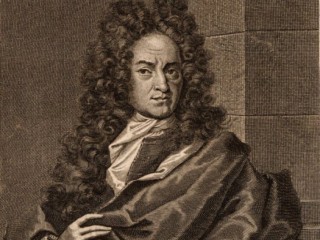
Georg Ernst Stahl biography
Date of birth : 1660-10-21
Date of death : 1734-05-14
Birthplace : Ansbach, Germany
Nationality : German
Category : Science and Technology
Last modified : 2011-05-13
Credited as : Chemist and physician, ,
The German chemist and medical theorist Georg Ernst Stahl was the founder of the phlogiston theory of combustion and the author of a theory of medicine based upon vitalistic ideas.
Georg Stahl was born on Oct. 21, 1660, at Anspach in Bavaria, the son of a Lutheran pastor. Although brought up in an extremely pious and religious household, he early showed an enthusiasm for chemistry. By the age of 15 he had mastered a set of university lecture notes on the subject as well as a difficult treatise by Johann Kunckel.
Stahl studied medicine at the University of Jena, where he graduated in 1683. Here he came under the influence of iatrochemical theories, which gave an interpretation of physiological processes in terms of chemistry. He was later to become a strong opponent of this school of medical theory. Following graduation he taught at the University of Jena for 10 years.
In 1694 Stahl was invited to fill the second chair of medicine at the newly founded University of Halle. He owed his appointment to the recommendation of the holder of the first chair of medicine, Friedrich Hoffmann. They made Halle one of the most important medical schools of the early 18th century, although their careers there were punctuated by frequent quarrels. For 22 years Stahl lectured at Halle and wrote an impressive list of works on chemistry and medicine. His lectures were said to have been dry and intentionally difficult; he is alleged to have had a low opinion of the intellectual capacity of his students at Halle.
Stahl's most notable contribution to chemistry was his famous phlogiston theory of combustion, which became one of the main unifying theories of 18th-century chemistry. He maintained that all substances which burned contained a combustible principle called phlogiston (from the Greek phlogos, a flame) which was liberated during the combustion process. This principle of phlogiston was present not only in such obviously combustible substances as wood, wax, oils, and other organic materials but also in inorganic substances such as sulfur and phosphorus and even in metals. Thus when a metal was calcined by heating (a process now known as oxidation), the metal was said to lose its phlogiston. Conversely, when the metallic calx was reduced again to the metal, phlogiston was taken up.
This theory also offered the first explanation of why charcoal was used in the smelting of metallic ores. Charcoal was a substance rich in phlogiston (since on burning it left no residue), and in the smelting process the phlogiston passed from the charcoal to the ore to give the pure metal. One of the major achievements of this theory was that it offered a comprehensive explanation of so many seemingly disparate chemical phenomena. In developing his theory, Stahl drew from the earlier ideas on combustion of the late-17th-century German chemist J.J. Becher.
As a medical theorist, Stahl opposed the purely chemical and mechanistic explanations of living phenomena current in his time. He emphasized the gulf between living and nonliving materials, stating that the distinctive feature of the former was that they possessed a soul which prevented their decomposition. His reintroduction of animistic or vitalistic ideas into physiology had great influence on 18th-century medical theory.
Stahl retired from academic life in 1716 to take up appointment as physician to King Frederick I of Prussia. He held this post until his death on May 14, 1734.
















